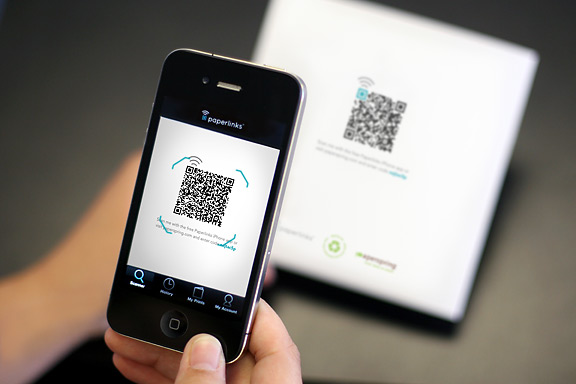by Rolf Gutknecht, Agent of Change (c) 2012
Tell me a fact and I’ll learn. Tell me a truth and I’ll believe. But tell me a story and it will live in my heart forever. — Indian Proverb
Ever wonder the best way to represent your product or service to prospective clients or customers? Here’s something to think about. Stop talking about the features of what you offer. Don’t even focus on the benefits. Don’t tell me how good you are or why you’re better than the competition. Instead, tell me about a situation your customers typically find themselves in. Paint me a picture of how that situation is improved by the use of your product or service. Show me what success looks like. Capture my interest with people or places that resonate with me. Don’t focus on you, your company or your products. Instead, tell me a good story!
Since the beginning of language, stories have continued to teach, inspire, entertain, motivate and engage us like no other form of communication. From bedtime stories when we were young to story time in elementary school to the sharing of family stories around the dinner table, they connect us on a much deeper level than any list of advertising bullet points could ever do. For those not convinced, try telling any favorite story using only bullet points and then decide which format people find more memorable and meaningful.
Recently, my business partner, Dan, and I met with a mid-sized “challenger brand” company to talk about their business goals and how we could help them grow their business in the face of a number of competitors. Tom, the company president, talked about his products and their features. It was the same stuff we’ve heard time and time again from other companies in his industry. It was only when he got away from the rattling off of bullet points and suddenly spoke emotionally and passionately about how one of his customers was saved from the brink of bankruptcy because of his company’s tailored services did we immediately feel more connected with his business.
So what’s the secret to good storytelling?
Well, there is a right way and wrong way to tell stories. The secret lies in making an emotional connection with buyers because emotions play the dominant role in most decision-making processes. We need to tell our stories with authenticity and real passion in order to cut through the information overload that buyers experience and the BS shields they put up. On that note, talk like a human. Enough with the business babble. Don’t worry about sounding smart. It’s alienating and condescending, and your story will be quickly lost on your audience. Talk like a human being that cares about making meaningful relationships with people.
So how do you relate your story to the reader so that it resonates and motivates them to take action in the form of purchase or even just their wanting to retell your story and spread the word? Here are few things to think about:
So that’s my story for today and I’m sticking to it. What’s yours? Go out and create your own stories and “live happily ever after.”

Los Angeles, CA — Perhaps the most challenging category to advertise is one that everyone will need but nobody wants: funeral care. And if customer acceptance isn’t challenging enough, it’s harder still for ads in that category to be recognized as “Excellent” in the advertising community
Northridge, CA-based Marketing agency LA ads recently won the prestigious 2012 Telly Award for “Excellence in Local TV Campaign, Business-to-Consumer” for its client, Rose Hills Memorial Park and Mortuaries. The four- commercial campaign entitled “Legacy” features older adults thinking about their own legacies and what stories about them will be handed down to future generations. Each commercial concludes “Whatever your legacy, it deserves to be honored at a place as beautiful as Rose Hills Memorial Park.”
The first commercial features a grandfather looking over his photo album with his young granddaughter. As she flips through the pages, the grandfather reflects on how his life has had purpose and that’s what counts. The second spot shows an elderly female photographer considering that it’s her children and grandchildren that are her real legacy, not her pictures. In a third commercial, a grandmother plants a tree in her yard with the help of her 6-year-old grandson. She reflects on how this tree will grow and bring joy long after she’s gone, a shared legacy with her grandson. The last spot focuses on a teacher’s final day before retirement as he thinks about the number of students whose lives he has influenced over the course of his career
“We’re proud and excited to have these commercials recognized by the advertising community,” said agency president and creative director Dan Katz. “It’s especially gratifying because funeral care is a difficult category to begin with. We are thankful that Rose Hills has encouraged us to step outside the boundaries of traditional cemetery advertising, such as direct response or expected testimonials, and explore different paths. This Legacy campaign touches on areas more audiences can relate to and appreciate.”
One of the hottest new marketing technologies trending right now is QR codes – you know, those little square bar codes you’re seeing more frequently on packages, on signs, in the corner of ads, even on the back of people’s business cards. QR stands for Quick Response and the idea is that you can scan these little suckers with your smart phone and almost instantly get to a specific website or application. They are fun…sometimes. But as often as not, they just take you to the same homepage you could just as easily type in, delivering little added value.
Advertising Age has reported that, for a number of reasons, consumers are far less excited about QR codes compared to marketers. In fact, they cite, only 5% of mobile phone owners have ever used QR codes. (Ad Age, January 2, 2012)
Rather than focus on all the reasons why this is so, the real take-away has to do with marketers paying more attention to techniques, technologies and tactics compared with the smart development of strategies and key messaging. Thinking about what one can do with a QR code, or Facebook page, or other medium de jure is letting the tail wag the dog. Being “cool” for its own sake has low residual value compared to having a message or perspective that consumers find fresh, meaningful, relevant, surprising and memorable.
 That being said, QR codes do indeed have their place in a marketing arsenal, and they can open up new levels of consumer involvement if handled thoughtfully.
That being said, QR codes do indeed have their place in a marketing arsenal, and they can open up new levels of consumer involvement if handled thoughtfully.
Let’s start with the environment: QR codes are designed to interact with smart phones (largely iPhone and Android platforms). So if you’re asking someone to take the time to open up their QR reader app and scan your bar code, they should expect some media that is designed exclusively for their phone, or what’s the point? Trying to read a standard website on a cell phone is awkward and shows an incomplete execution. Sadly, that’s the standard for most businesses currently using QR codes in their marketing.
While we’re on the subject, keep in mind those who make up the bulk of consumers with full-function smart phones. Numerically, most are under 50. So if you’re primarily speaking to an older population, QR codes and mobile-optimized sites are of lesser value. But if you’re targeting a young or middle-aged audience, then you’re well-aimed.
As for what one can do with a QR code that adds value to the user, and doesn’t simply bring them to your landing page, here are some ideas:
No matter how you use QR codes, there are two things to keep in mind. The first is that you must have a basic reason for someone to desire to have this information on their mobile phones compared to a PC. Two, these ideas are still only tactics. It’s the strategy that must remain foremost in your thinking.
Only when you are clear in your strategy, and you can articulate in 30-seconds or less what unique competitive value you bring to your customer, should you start thinking about where and how to deploy your messaging. QR codes should always be an expression of your strategy, not the strategy itself.
In other words, make sure that you let your dog was his tail. It doesn’t work well the other way around.